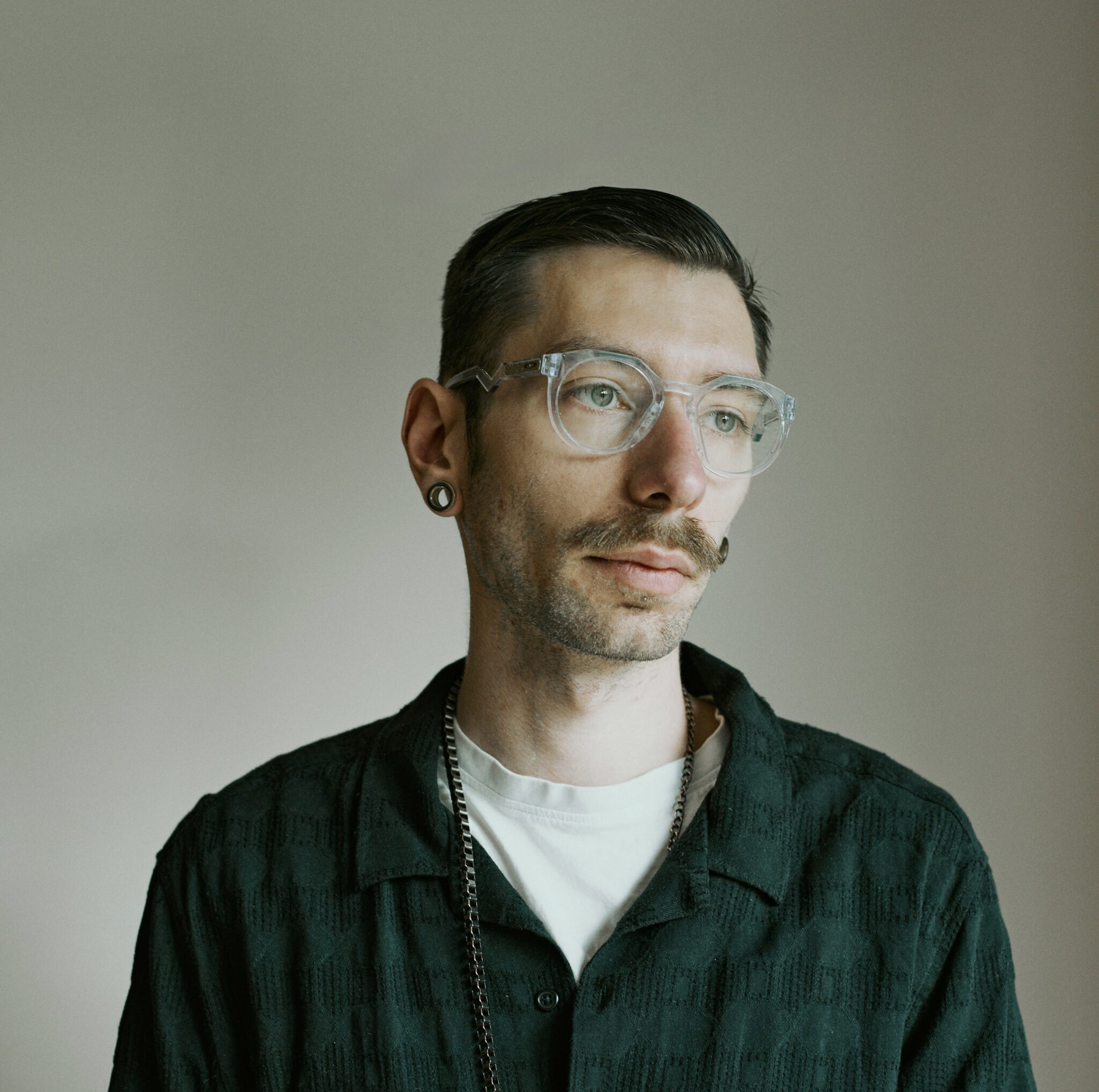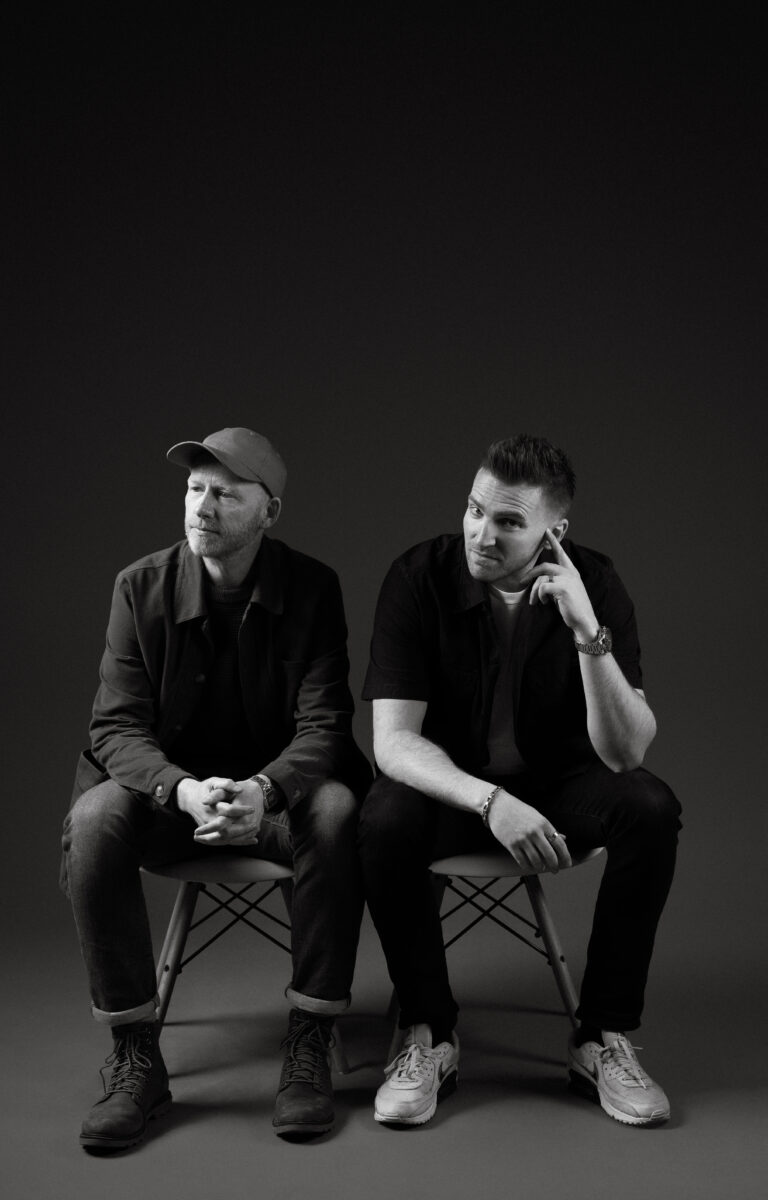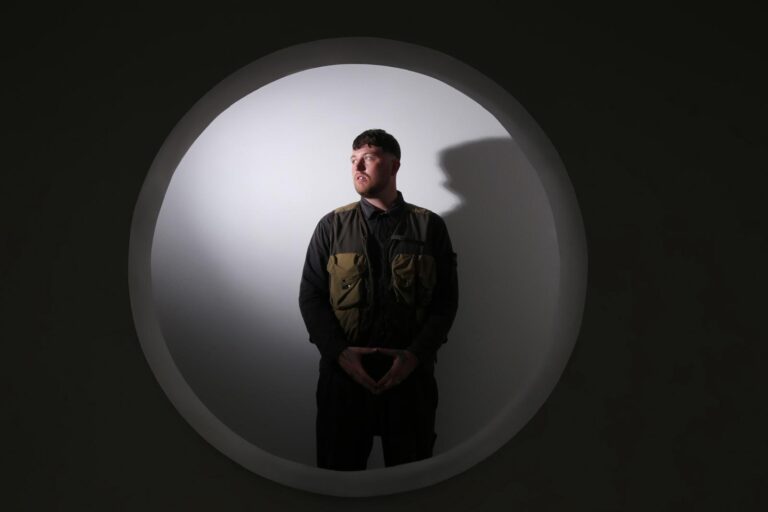The already impressive sonic adventures of Vici are about to reach even greater highs in 2025.
The drum and bass-obsessed French DJ and producer from Grenoble is capitalizing on his current momentum, aiming at cresting the apex with his latest EP on Blackout, Prism released on June 27, 2025.
Flashover, his debut album on Neksus Sound, arrived in March – and very much so to critical acclaim. While it cemented his status as someone to follow, the collaborations with Audio, Forbidden Society and Neonlight on the new EP not only elevate Vici’s reputation by association with some of the established greats – they also prove he’s recognized in those circles as a highly gifted grafter.
Hype talk aside though – The Bass Jump representative’s authentic passion for putting in the hours, and honest, but humble self-belief, underline he’s got the fundamentals right beyond music theory.
We spoke a few days prior to the EP release, coinciding with Vici enjoying a vacation in Spain. The timing couldn’t have been more right, providing a setting for insightful introspections into his history, present mindset, and vision for the future. Enjoy!
2025 has been a whirlwind for you: a debut album in March and now a massive EP on Blackout featuring some dream collaborations. How are you processing all of this?
It feels absolutely incredible. Releasing my debut album Flashover on Neksus Sound in March was already a massive milestone for me; an album is the ultimate artistic statement I’ve always wanted to make.
To follow that up immediately with this EP, featuring dream collaborations with artists like Audio, Forbidden Society, and Neonlight, is just surreal. I’m immensely grateful that Blackout has thrown their support behind this project; it’s truly a momentous time.
To top it all off, your collaboration with the legendary Audio just received a UKF premiere. That must be a dream come true.
I’m speechless. I discovered UKF right at the beginning, around their second upload which I think was a dubstep track. To see my own music featured on such an iconic platform is a genuine dream realised. And for it to be the track with Audio… I couldn’t be happier.
Our relationship started when I remixed a track for his album. After that, when the Blackout EP was taking shape, I nervously sent him a message asking if he’d be up for a collaboration. You’re always a bit apprehensive asking an artist you’ve admired for so long, but he said yes, and the tune came together in just three days. It was a crazy-fast and seamless process.
Let’s talk more about that EP. It’s titled Prism, which suggests a spectrum of styles. What was the concept behind it?
The concept for Prism was born from the same desire as my album: to showcase the full spectrum of sounds that I love. The name reflects the idea of showing different facets of my style. I had the track Cosmic Impact for about a year, which is quite techy. Then we created the neurofunk stormer with Audio. I felt it needed a proper jump-up track and something more stab-focused to round it out.
The jump-up tune came together with Forbidden Society, which was wild because he’s known for his dark, techy material on Vision, not exactly jump-up! But he sent me a work-in-progress with this undeniable jump-up groove, and we just ran with it. Then for the stabby track, Neonlight sent over some ideas that were perfectly suited to my style. It all came together naturally because I had this clear vision of representing everything from neuro to jump-up. I love all of drum and bass and never want to confine myself to a single sub-genre.
What were the biggest lessons from working with such established names like Audio, Forbidden Society, and Neonlight?
The greatest lesson was learning to build upon a pre-existing idea. When you start a track from scratch by yourself, you have total freedom. But in a collaboration, you receive stems; drums, basses, and your job is to add your own identity without completely changing the foundation they’ve laid. You have to work with what’s there.
It forces you into a different creative mindset, problem-solving how to make your sounds fit perfectly into their world. It was a fantastic challenge and taught me a lot about adapting my workflow. When you hear your signature sounds blending seamlessly with an artist you deeply respect, it’s an incredibly rewarding feeling.
Gaining the recognition that leads to collaborations with artists like Audio and Neonlight is a dream for many upcoming producers. What advice would you give to them on how to create those opportunities?
My best advice is to start by building a relationship, and the most effective way to do that is by asking for feedback first. I was sending tunes to artists like Phace for five years, getting his feedback and improving with his guidance. Don’t be afraid to reach out, but be strategic. If you only started producing two weeks ago, your music won’t be ready for feedback from top-tier artists. Wait until you are confident in your work.
Start by sending your tracks to smaller artists and build from there. When you get positive feedback and support, a relationship begins to form. For instance, my connection with Audio really started when he played a remix I did. Once you see that an established artist is playing your music, you can feel more confident asking for more detailed feedback, perhaps a remix opportunity, and eventually, a collaboration. It’s a journey that requires patience.
In today’s world, there are no limits. You don’t need to hand a CD to someone at a party anymore. Use social media, send a polite message on Instagram. If your music is good, they will listen. Just focus on making your best tunes, share them with the right people, and trust that your work will speak for itself. It will happen.
If you had to distill your artistic identity into a few words, what would they be?
I would say: prolific, passionate, and happy. I can genuinely say I’m happy now. My passion for drum and bass is at the very core of who I am; the music is etched into my heart.
Your journey with drum and bass started incredibly early, at nine years old. Can you take us back to that first encounter?
Of course. It was on Google Video, even before YouTube became the giant it is today. I stumbled upon Pendulum’s first-ever BBC Radio 1 Essential Mix. My dad is a guitarist in a metal band, so I grew up loving metal, and hearing Pendulum’s fusion of heavy riffs and electronic music was a revelation. I thought, “This is my thing.” I was only nine, but I memorised that entire mix, every single track. From there, I started digging into all the artists featured in it, and that was my gateway into the wider world of drum and bass.
And from that initial spark, when did you decide to seriously pursue music production?
I started dabbling with production around 13, but it was very sporadic—maybe once a month. I experimented with everything, trying to understand how it all worked, even making some dubstep. The turning point was when I was 15 or 16. I began producing for three hours every single day, religiously watching tutorials. About a year after I made my first proper tune, I met The Clamps at a party and got the question to collaborate. I was shocked, telling him, “I’m too small, you’re too big!” But he didn’t care. That collaboration was my first major milestone. It gave me an immense surge of energy and solidified my belief in the beauty and openness of this scene.
That dedication has clearly intensified. You mentioned quitting your job to focus on music full-time. What gave you the confidence to make that leap?
That decision was all about timing and preparation. I was working as a receptionist, and the daily production hours grew from three to nearly ten. I realised I needed to commit fully to music. The crucial factor was having a safety net. I’d saved enough money to support myself for a year without an income. Also, in France, we have a system where if you leave a job after paying taxes for a certain period, you can receive government support, which is incredibly helpful for aspiring artists.
My advice to anyone considering this is to wait for the right moment. Make sure you are financially secure so you don’t put yourself in a difficult position. For me, having the time and mental space to fully dedicate myself to my craft is precisely why I was able to create the album this year.
Looking back at the years of hard work, what quality has been most crucial to your perseverance?
Patience. The key is to not rush the journey. Some artists might explode onto the scene within a year, while for others it might be a 20-year marathon. Everyone’s path is unique. The most important thing is to consistently work with passion. If your motivation comes from a genuine love for the music, you’ll always be giving your best. Quitting prematurely is often a sign of impatience, a sign that you’re not in it for the right reasons. If you truly love what you do, you have everything on your side.
So it sounds like you’re more invested in the creative process itself than the final outcome?
Completely. For me, it’s all about the process. When I’m in the studio, I’m not thinking, “I need to make the next big hit.” I’m thinking, “I get to do something I love.” Approaching it that way brings a sense of comfort and allows inspiration to flow naturally. It’s the best mindset for me, though I’m sure every artist is different.
How do you manage your studio routine to maintain that creative flow, and what’s your strategy for the days when inspiration just isn’t there?
I treat it like a full-time job. I wake up, eat, and I’m in the studio from about 9 AM to 9 PM. But a key piece of advice I always give my students is that you can still be productive even when you don’t feel inspired to write a full track. On those days, I switch my focus to pure sound design. I’ll just open Serum and spend hours making kicks, snares, and basses without the pressure of composing. This way, you’re still training your ears and learning every day. Sometimes, I can spend a month just making sounds, and often a sound I create during one of these sessions will become the spark of inspiration for my next track.
So you advocate for pushing through, even when you feel stuck?
Not always. Sometimes, even sound design can feel like too much for your brain. You have to know when to step away completely. In those moments, the best thing to do is close the computer, go outside for an hour, sit quietly without listening to music, and just be with yourself. You will always feel better after. You are the only one with the key to unlock your own creativity, and you have to find what works for you.
For me, being in nature is the ultimate reset. I’m lucky to live in the mountains, so I’m surrounded by it—snow in the winter, lakes in the summer. I’m not a city person; I thrive in the calm and tranquility. When I feel creatively blocked, a simple walk outside to see the greenery is often all I need. This process has proven itself time and again. I can struggle with a remix for ten days straight, getting nowhere. But if I force myself to take a full day off, go out, and not think about it, I’ll come back the next day and the track is finished. Giving yourself that break creates the space for inspiration to return.
When you sit down in the studio, what’s your typical starting point for a new track?
It’s always the drums. Always. I open my project template, which is pre-loaded with a few of my favourite kicks and snares I’ve designed in Serum, and I focus on building a compelling breakbeat. Once I have a solid groove, I’ll start creating basses and developing a rhythm. The rest of the track flows from there. I’m not someone who starts with an intro; I usually build that at the very end of the entire process.
What movie or series would you love to sample in the future?
On Bad Spirits with Audio, I sampled a quote from Enter The Void, but I need to watch 28 Years Later when I’m back from holidays. I was a huge fan of the two first movies, so I’m sure I’m gonna find a quote I will love!
Listening to your music, there’s a real ‘less is more’ feeling from the composition, yet the sound design is incredibly detailed and grabs the listener’s attention. How do you balance minimalism with complexity?
I’m a total nerd when it comes to sound design. On the surface, it might sound minimalist, but the reality is quite different. A single bass sound in one of my tracks might be constructed from 15 different layers. A casual listener won’t notice this, but a fellow producer would understand the depth. I can easily spend ten hours meticulously crafting and layering a single bass patch using automation and macros to change wavetables and textures.
I’m like a scientist in my studio, constantly experimenting and trying to discover new sonic textures. That’s why I love teaching production on my Patreon – I enjoy deconstructing the complexity hidden within what appears to be simple.
Your career has accelerated recently. How has your definition of success evolved, especially in the last couple of years?
For me, true success arrived when I earned the respect of the artists I look up to. When people like Mefjus or Phace follow you, and you can have deep, meaningful conversations with them about production, and they tell you they love your tunes—that’s the ultimate validation. It’s about earning your place within the scene you admire. The public recognition, the popularity, that comes after. I feel I’ve gained some respect from the scene’s key players, even if I’m still in a niche. I’m patient; I don’t care about stream counts. If the wider recognition is meant to come, it will.
You’re playing at Boomtown for the first time this year. What does that milestone mean to you?
It’s absolutely mind-blowing. I first went to Boomtown as a fan in 2017 and was just in awe. The scale of it, the creativity—it’s like a playground for adults. I remember standing in the crowd thinking, “One day, I’m going to play here.” And this is the year. A huge thank you to Mandidextrous for booking me alongside my MC, Miss Understood. I love performing with her; she’s not just an MC, but a vocalist, which allows us to create a really dynamic and musical set where I can even play liquid tracks for her to sing on. We are going to give that stage the best show we possibly can.
Looking ahead, what is your five-year vision for Vici?
In five years, I hope to be in a position where I can release music whenever I want. Not necessarily by starting my own label, but by having built strong enough relationships with the labels I love that I can say, “Hey, I just finished this tune, can we get it out next month?” and the answer is yes. I sometimes find it frustrating to have to wait a year to release something.
The process for the Blackout EP was perfect— I finished the last tune just a month before the deadline. I want that immediacy to be the norm. And, of course, to be playing a lot more gigs in all the places I dream of visiting. DJing and connecting with different crowds is one of the best parts of this journey.
You’re also relaunching your Patreon next month. What can your followers expect from this new chapter?
They can expect a lot of nerdy stuff! I’m excited to dive back into it. There will be extremely in-depth track breakdowns where I show everything—all the “too many layers,” my sound design techniques, mastering chains, and I’ll also be offering 1-on-1 lessons.
I genuinely love teaching and sharing my process. I don’t believe in secrets; if someone asks how I made a bass, I’ll show them. Patreon is the perfect platform to share that knowledge consistently. I had to pause it a few years ago due to technical limitations, but with my new setup, I’m ready to go. I can’t wait to get it started in a couple of weeks.
Follow Vici : lnk.bio / Soundcloud / Patreon


